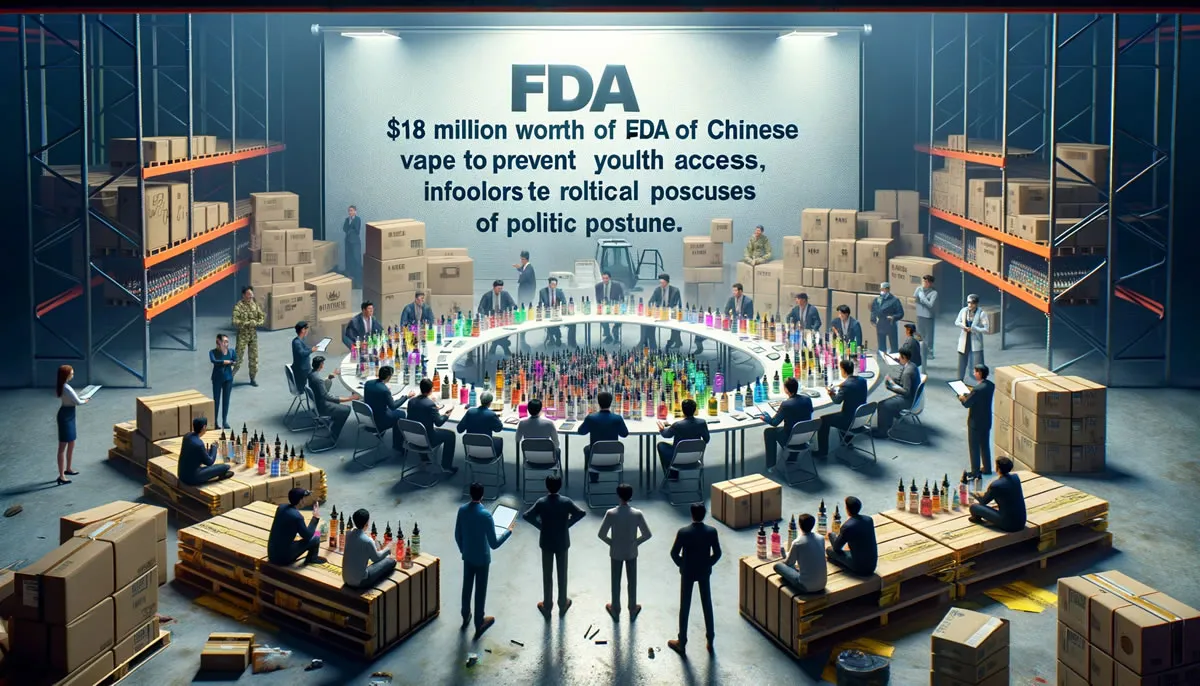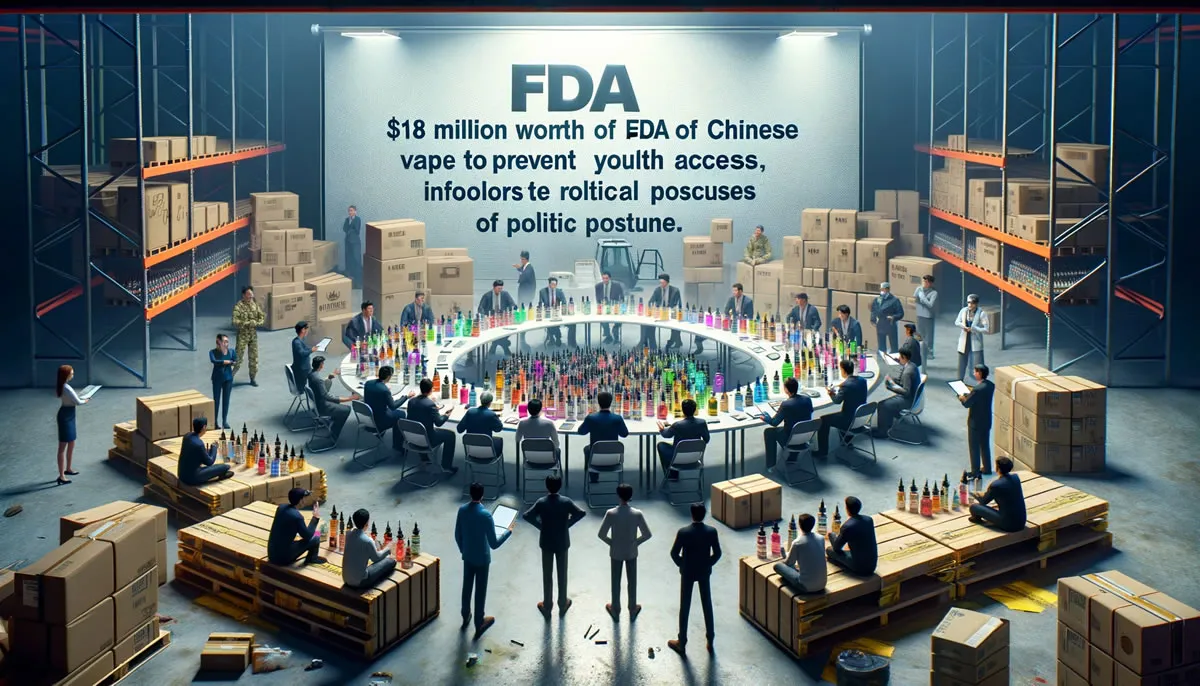The U.S. Food and Drug Administration (FDA) recently collaborated with Customs and Border Protection (CBP) to confiscate $18 million worth of vaping products illegally imported from China.
While the agencies trumpet this as protecting American youth, the actual impact on underage vaping seems questionable given the relatively small seizure value after months of preparation.

Vaping Epidemic Driven More By Politics Than Data
Surveys showing vaping adoption among teens are often exaggerated by cherry-picking and questionable interpretations. Most experts agree e-cigarettes are overwhelmingly used by adult smokers for cessation or harm reduction.
Yet vaping has been vilified through campaigns like "Reefer Madness," more focused on optics than evidence. This likely stems from moral objections to nicotine rather than data on youth risk profiles or smoking rates.
Botched Regulations Made Vaping Cool Then Handed The Industry To Big Tobacco
Ironically, heavy-handed vaping restrictions seem to have sparked the very teen adoption politicians sought to prevent. By turning vapes into forbidden fruit, they became a temporary fad which has since largely faded.
However, strict regulations have also consolidated the sector almost exclusively under Big Tobacco purveyors like RJ Reynolds, Altria and Japan Tobacco. Smaller companies lacked resources to navigate complex compliance burdens targeted toward pharmaceuticals.
This leaves adult smokers seeking to quit cigarettes with fewer reduced-harm options from independent brands. Most now rely on the same tobacco giants they’d hoped to abandon.
$18 Million Seizure Unlikely To Impact Youth Vaping
While any black market vape sources raise valid concerns, a one-off $18 million seizure has negligible impact on domestic access. It may play well politically but overlooks root causes of residual underage use.
“These sporadic confiscations seem more symbolic than systematic,” said public health professor David Sweanor. “ resources would be better spent on evidence-based youth education and access controls rather than prohibitionistchest thumping.”
Next Steps: Data-Driven Youth Policies, Not Piecemeal Crackdowns
Rather than reflexive alarmism, nuanced vaping regulation requires accounting for relative youth risk while preserving access for adult smokers. This demands an impartial weighing of population-level public health impacts beyond partisan postures.
As Sweanor notes, “Policymakers would achieve far more lasting gains through non-punitive youth prevention coupled with market structures keeping profits from bad actors.”

